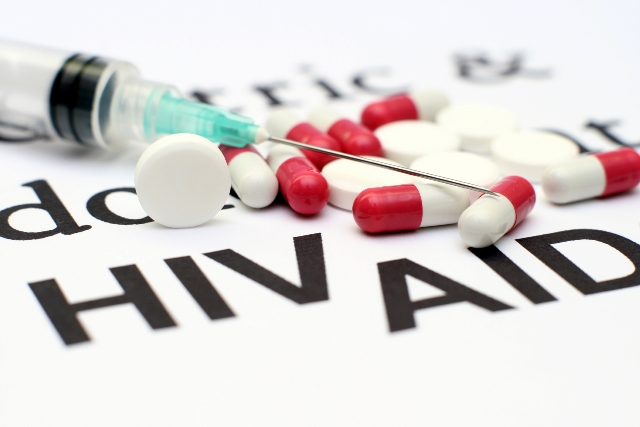Indonesia is a country with a high number of HIV/AIDS cases. HIV/AIDS patients with oral candidiasis are at high risk of experiencing resistance to the treatment given. Oral candidiasis is a clinical sign found in 50-95% of HIV/AIDS patients2. The early management of oral candidiasis in HIV/AIDS patients uses fluconazole at a dose of 100 mg/day for 7-14 days. Nystatin can be used as an alternative if the fluconazole dose does not show any improvement.
A 34-year-old male patient was presented from Indonesia (Java by ethnicity) with main complaints of discomfort and pain in the tongue for two days before visiting the hospital on March 15, 2019. He was inpatient for 14 days (2 weeks) at dr. Soetomo General Academic Hospital, Surabaya, Indonesia. The patient also had eating difficulty because of the pain he felt. He had suffered fever two days before he went to the hospital. The patient had never been examined or received treatment for his complaint. He had a history of being diagnosed with HIV stage IV and receiving ARV therapy for the past two years. He was having pain in his genital areas when urinating. His mo nutrition consumed was few (
The physical examination of oral cavity showed white pseudomembrane on the tongue and palate. This pseudomembrane could be removed, but left a reddish (erythematous) mark and painful. KOH examination obtained positive result to fungi. Based on the signs symptoms that arise in the patient gets the main diagnosis of oral candidiasis and a second diagnosis was HIV / AIDS stage IV. He has potenta urinary tract infection diagnosis and we collaborated with genital division but it was not administered any therapy. Therapy: he received were administration of fluconazole of 150 mg/day, duviral of 1 tablet/day (300 mg zidovudine and 150 mg lamivudine), multivitamin B complex and iron 1 tablet/day, counseling, educated to oral hygiene, and collaboration giving high-protein high-calorie diets.
One week later, he wasn’t not feeling better post use of fluconazole so that swab examination from oral tissue was taken. Culture was performed on Sabouraud Dextrose Agar (SDA) media at 37°C for 48 hours. SDA agar examination was continued by culture using CHROMagar (CHROMagar Candida, France). Candida albicans and Candida glabrata colonies were identified. A resistance test was conducted using a disk diffusion method on Mueller Hinton agar with 2% glucose and methylene blue. Candida species isolates were implanted in the agar, and then paper disks containing fluconazole, ketoconazole, and nystatin were placed on top of it. The interpretation of diameter of inhibition zone based on CLSI8. The results showed fluconazole resistance, ketoconazole intermediates and sensitive to nystatin. He was using fluconazole during the culture process. When, result of culture finished, fluconazole drug was replaced to nystatin drug.
On March 29, 2019, he could have outpatient care and educated to maintain his oral hygiene, and was given a suspension of nystatin which was consumed three times a day as much as 5 ml (500,000) for fourteen days. One week later, he was called again to the hospital and treatment continued until 7 days. On the sixth day of treatment (used nystatin), the pseudomembrane began to thin out. On the tenth day of treatment (used nystatin), pseudomembrane got disappeared. On the fourteenth day, no sign of complications or recurrence was found.
In various literatures, it is stated that 50-90% of HIV/AIDS patients have oral candidiasis. Candidiasis has several types but the most common type found in HIV/AIDS patients is erythematous chronic type. Acute pseudomembranous candidiasis is the most frequent type of oral candidiasis. However, other types of candidiasis such as acute pseudomembranous candidiasis, acute erythematous candidiasis, and chronic pseudomembranous candidiasis can be found in HIV/AIDS patients.
Oral candidiasis in HIV/AIDS patients is often accompanied by esophageal candidiasis. In this case study, the patient had eating difficulty. This should be suspected as the possibility of esophageal candidiasis, as various literatures reported that complaints of esophageal candidiasis can include swallowing pain, difficulty in swallowing, and chest pain. Esophageal candidiasis is the direct fatal cause in HIV patients with oral candidiasis. Therefore, it is necessary to conduct an aggressive treatment of oral candidiasis in HIV patients.
HIV/AIDS patients experience suppression in the immune system. This condition makes HIV/AIDS patients susceptible to opportunistic infections, including fungal infections. Resistance to one type of azole drug may cause cross-resistance to other azole drugs. Several species of Candida non-albicans are intrinsically resistant to the azole group, namely Candida krusei and Candida glabrata. Anti-fungal susceptibility examination is proposed to ensure the minimum amount of drug needed to inhibit the growth of fungal strain (it is called minimum inhibitory concentration/MIC).
The increasing number of HIV/AIDS cases result in increased oral candidiasis. Candida albicans is the most pathogenic cause found in 90% HIV populations suffering from oral candidiasis. Oral candidiasis in HIV patients is often accompanied by esophageal candidiasis that serves as a direct fatal cause in 80% of oral candidiasis in HIV patients. Therefore, oral candidiasis medication for HIV patients must be more aggressive. The administration of nystatin suspension, three times a day, as much as 5 ml (500,000 unit) can be used as an effective medication for oral candidiasis. Education of oral cavity health is important to reduce candidiasis risk. Patient’s observation during and after treatment is necessary to detect early drug-induced hepatitis and oral candidiasis recurrence.
Author: dr.Dwi Murtiastutik,Sp.KK(K)
Details of the article available at:
Fluconazole Resistant Oral Candidiasis on HIV Patient – What Other Drug can We Choose? A Case Report
Fluconazole Resistant Oral Candidiasis on HIV Patient – What Other Drug can We Choose? A Case Report
Dwi Murtiastutik, Cita Rosita Sigit Prakoeswa and Indah Setiawati Tantular





